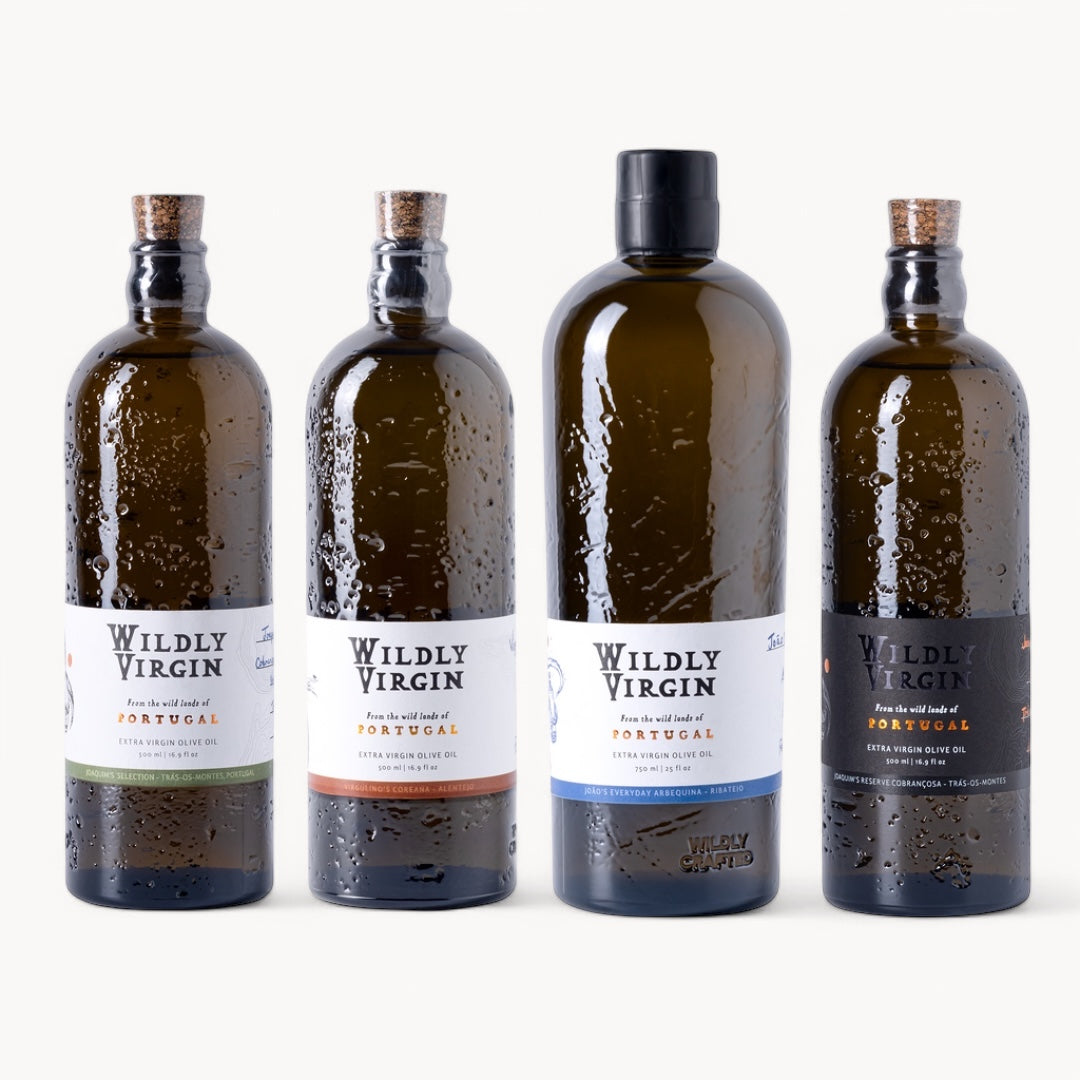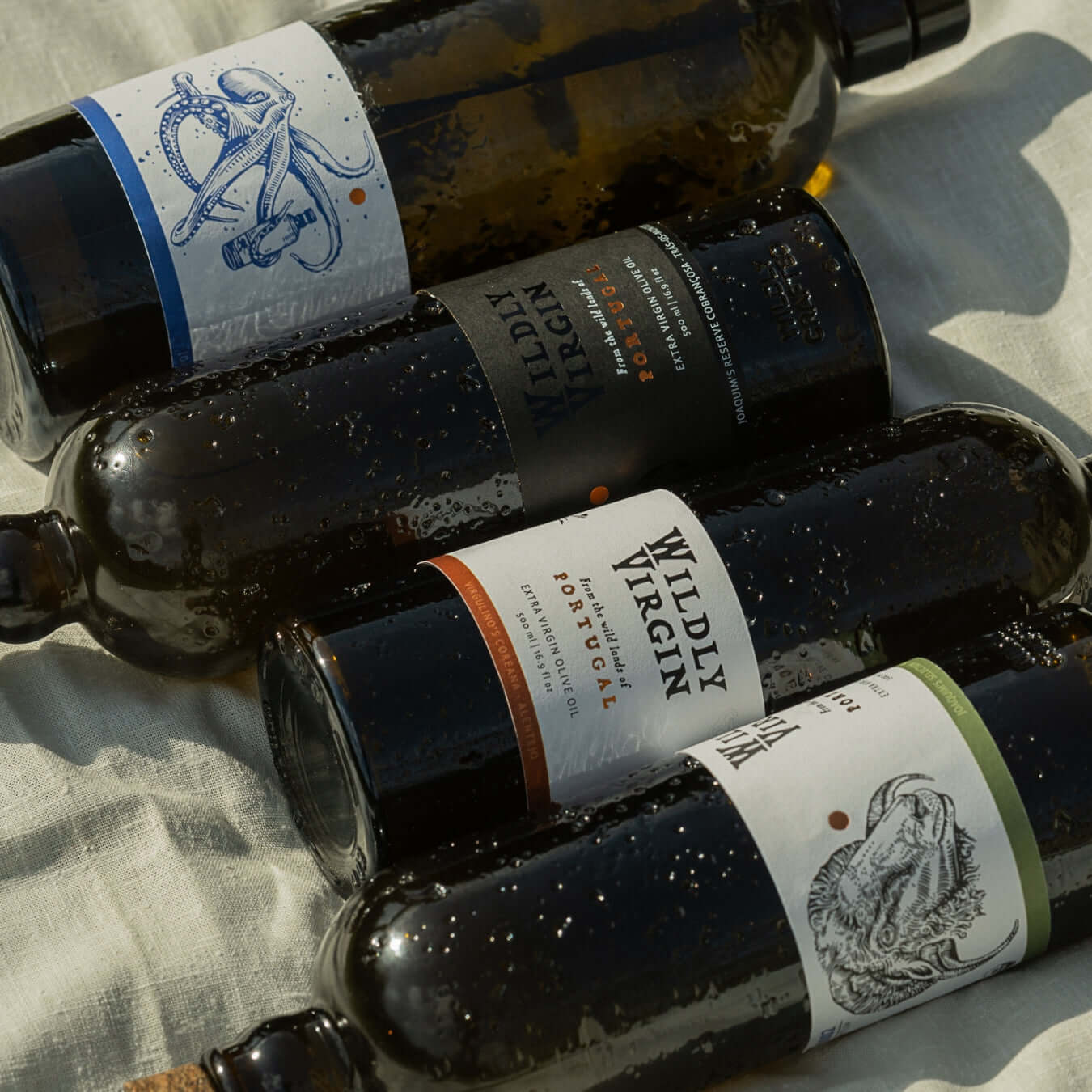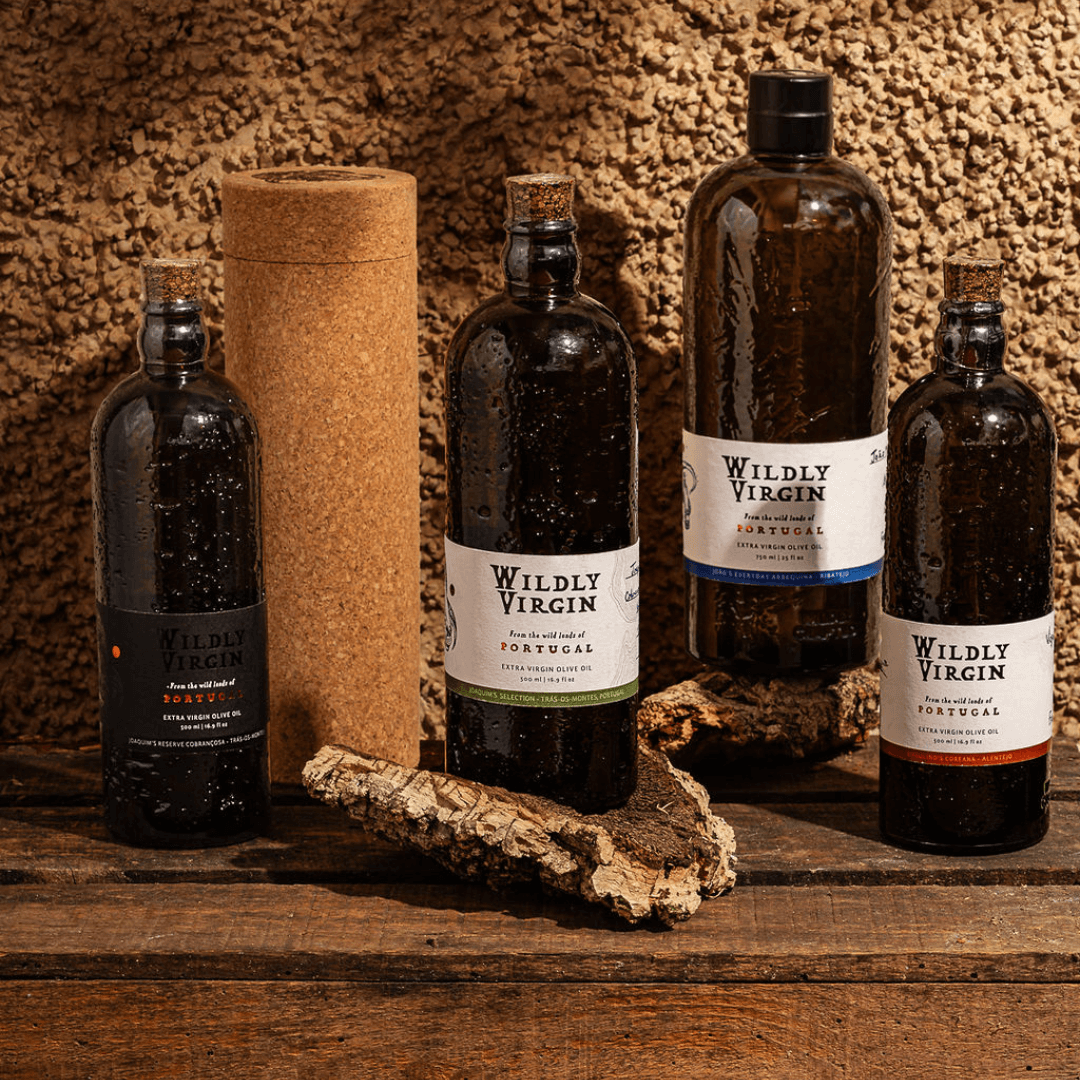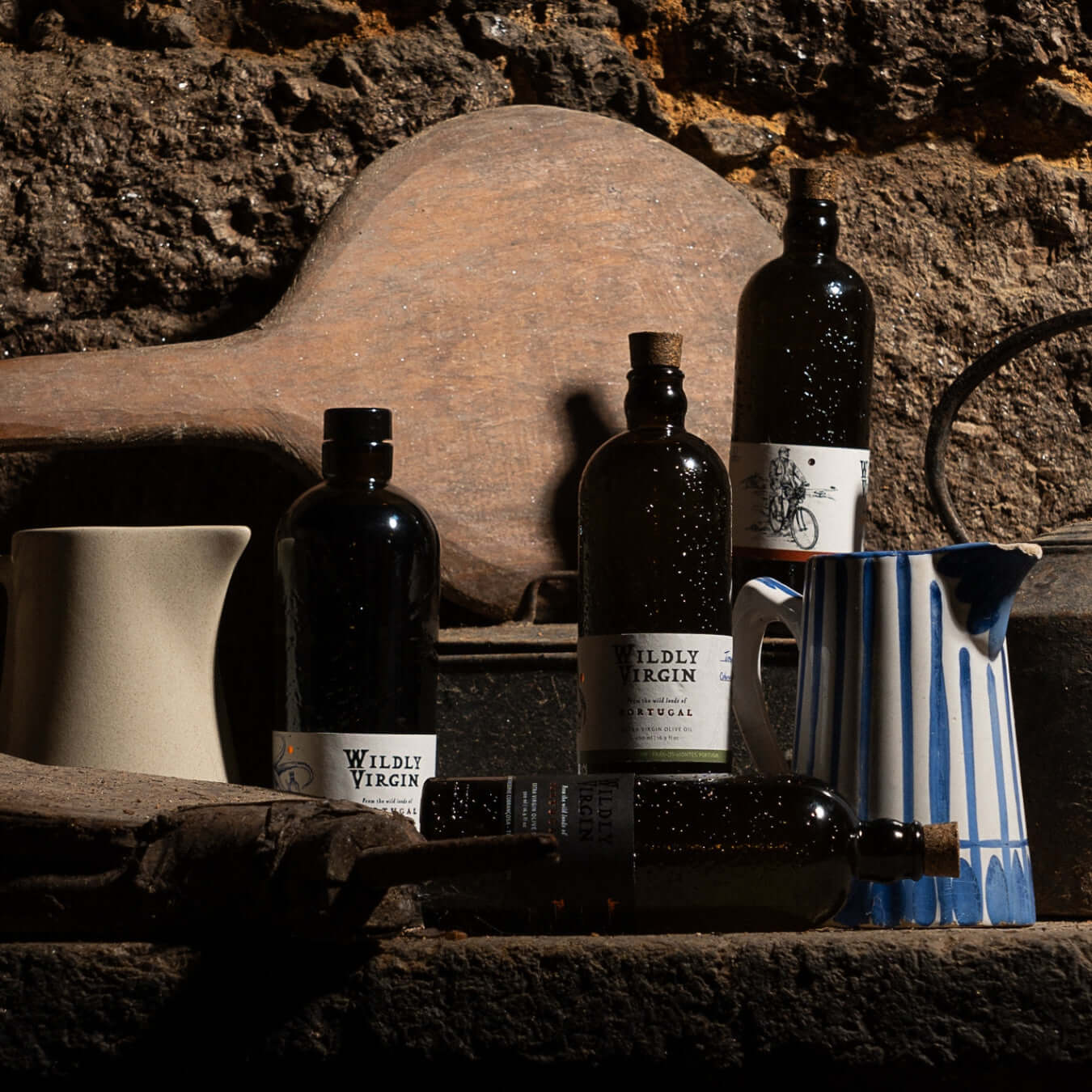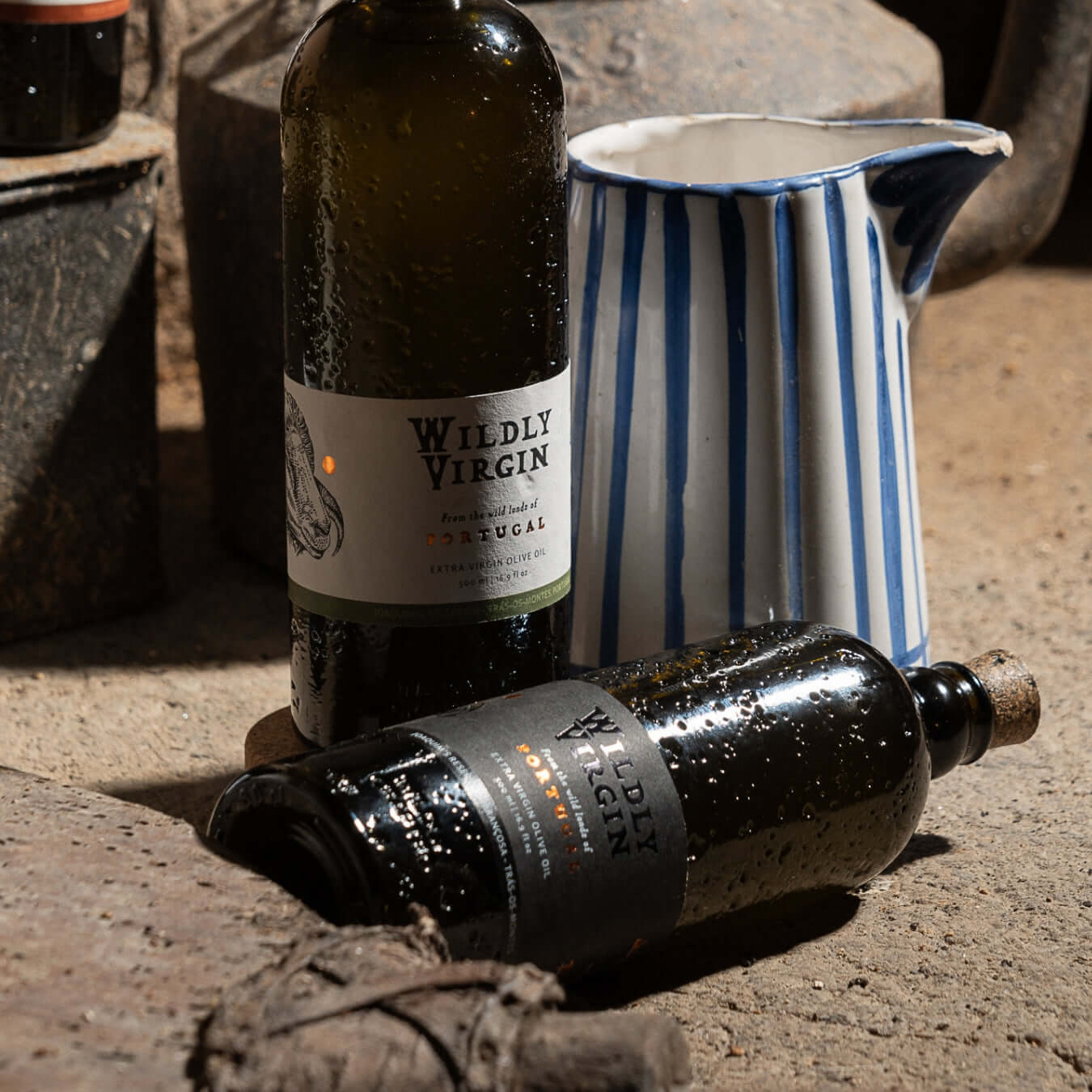1. Gather Your Olive Oils
Choose a selection of high-quality extra virgin olive oils from different regions, varietals, and harvest times. One of the fun aspects of an olive oil tasting is introducing friends to how different olive oil can be. To that end, you’ll want to choose a selection of high-quality extra virgin olive oils and showcase their differences. Consider both blends and single-varietal, or greener olive oils and fruitier ones. You can try olive oils from different countries, like Portugal, Spain, Italy and Greece, or from different regions of the same country. If you can get your hands on an unfiltered olive oil, like João’s Arbosana, that is great to compare to more typical filtered olive oils. For a wild card, grab a bottle of your supermarket extra virgin olive oil and let your guests see how little flavor that has.
Have an arc to the tasting, for example from sweetest to spiciest or from West to East.
Tip: Ensure your olive oils are fresh. The vibrant flavors of fresh olive oil begin to fade after about 18 months, so check the harvest date!
2. Prepare the Setting
To give your olive oil tasting the full sensory experience, gather the following:
- Small glass tasting cups: While professionals typically use blue glasses to avoid bias (some think greener oils are of higher quality, but this isn’t true!), we recommend clear cups so you can observe the differences in color, viscosity and opacity.
- Print out some flavor wheels: Tasting is all about recalling memories. An aroma wheel can help spark your memory. “Oh yeah that does smell like unripe bananas!” Below is our aroma wheel you can print out.
- Tasting notes or scorecards: Provide your guests with a sheet to jot down their thoughts on each oil’s flavor, aroma, and texture.
- Green apples: Between tastings, green apples are the best option for cleansing the palate. As olive oil is viscous, water won’t get the job done.
Keep the atmosphere relaxed and engaging—tastings should feel like a journey of discovery, not a formal exam. Play some music, have a good time.

3. Guide your Guests through the Tasting
Explain the steps for tasting olive oil like a pro:
- Visual Inspection: Pour about a tablespoon of olive oil in each glass. Though the color of olive oil doesn’t always reflect its quality, it’s fun to note the shades, which can range from deep gold to bright green. Is the oil transparent or opaque, thick or thin?
- Smell: Encourage your guests to place one hand under the glass and the other on top and gently swirl the oil in the glass. Your bottom hand will warm up the oil and the top will capture the aromas. Give the olive a sniff. Fruity, grassy, or peppery aromas are common in fresh olive oils. Use the wheel to see what you pick up on. Intensely aromatic olive oils can be smelled while holding the glass at your chin, while weaker ones you may have to put your nose into the glass to pick up the aromas.
- Taste: Have everyone take a small sip, letting the oil coat their tongues. To taste like a pro, sip a bit of air into your mouth while the oil is in there and swirl it all around your mouth and tongue. Swallow the oil. Ask them to note the flavors and sensations—bitterness, pungency, and different types of fruitiness are the key tasting characteristics pros are looking for, but there are no right answers!
Tip: Highlight how early-harvest oils like Wildly Virgin’s can be more robust and peppery, while late-harvest oils may be softer and more buttery.
4. Encourage Interaction
Ask your guests what they think of each oil. Did they feel some pungency down the back of their throats? See if a flavor like almonds that one guest picks up on, can be found by another. Great olive oils are balanced, so one with more pungency on the back of the throat should also have fruitiness to match it. Are these balanced? How would they compare blends vs single varietals? Early harvests vs late?

5. Turn it into a Dinner Party
After you’ve tasted all the olive oils, provide some food that goes great with olive oils, and leave out all the different oils for people to experiment. Some great options are tomatoes, soft and hard cheeses, simple green salads, crusty bread, cured meats, roasted potatoes or vegetables, and fruit like pineapple or peaches (you’ll be surprised!). Try different pairings. Which work best? End with a vanilla ice cream, topped with some olive oil and salt and you will blow your guests away.
Why Hosting an Olive Oil Tasting Matters
By hosting an olive oil tasting, you’re not just offering your guests a unique experience—you’re also introducing them to the world of craft olive oil, helping them appreciate its complexity and the effort that goes into each bottle. For those unfamiliar with olive oil beyond a kitchen staple, tastings can be an educational and sensory adventure, leaving them with a newfound respect for this ancient food. To support the craftspeople making these incredible olive oils we need to get more people appreciating the difference between supermarket commodity olive oil and special ones that embrace a world of flavors, stories and heritage.
Whether you’re planning to use this guide for a casual evening with friends or a more formal event, remember to keep the mood light, the stories rich, and the olive oil flowing!



